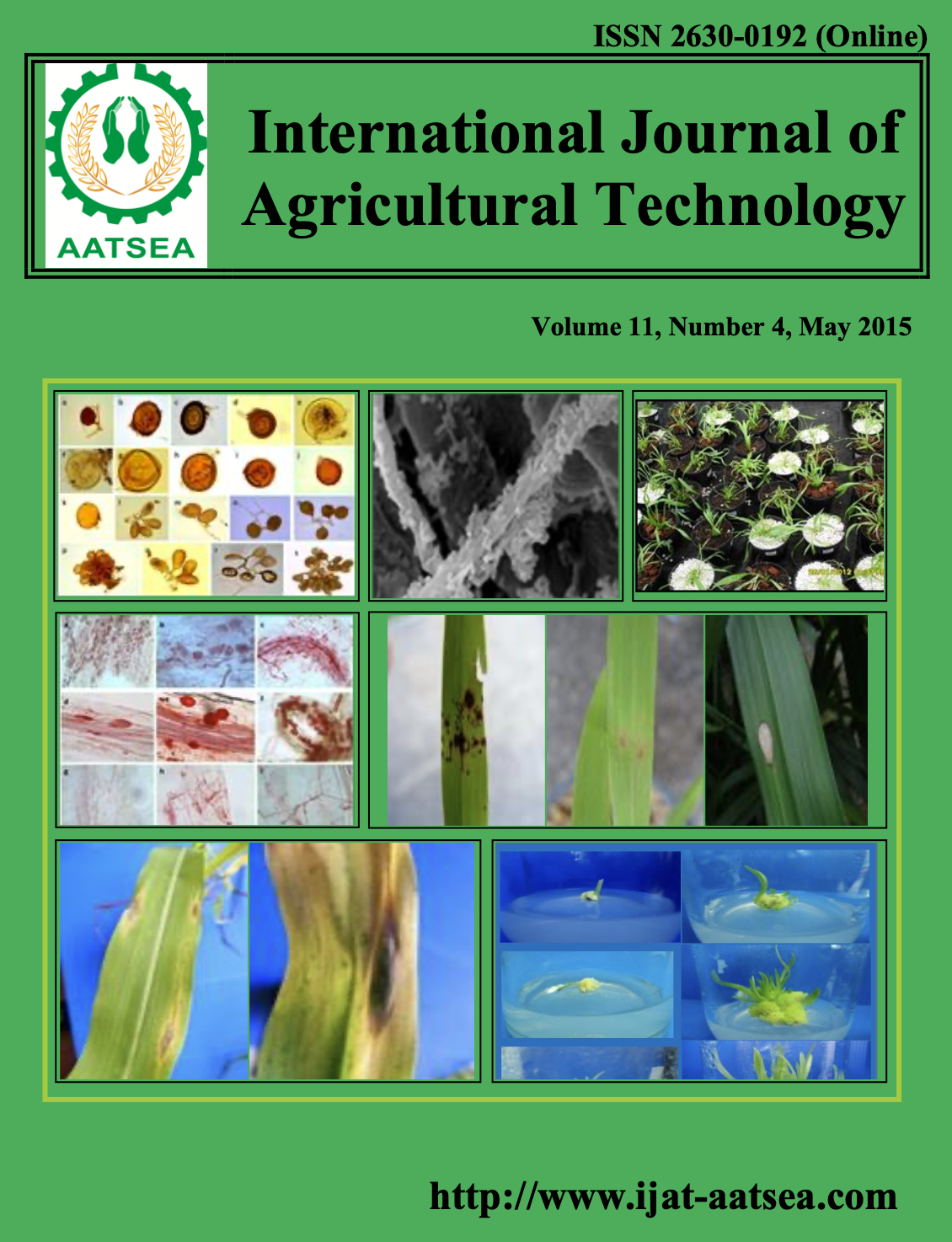Seed dormancy and germination in two wild genotypes of Sesbania of the southwest mangroves in India
Main Article Content
Abstract
Article Details

This work is licensed under a Creative Commons Attribution-NonCommercial-NoDerivatives 4.0 International License.
References
Bewley, J. D. and Black, M. (1994). Seeds: physiology of development and germination. USA: Plenum Press. 297 pp.
Bhat, K. G. (2003). Flora of Udupi. Udupi, Karnataka, India: Indian Naturalist. 597 pp.
Chakrabarti, N. and Mukherji, S. (2003). Effect of phytochrome pretreatment on nitrogen metabolism in Vigna radiata under salt stress. Biologia Plantarum 46:63-66.
Chotechaungmanirat, S. (2010). Potential of three tropical legumes for rotation of corn-based cropping system in Thailand. Kasetsart Journal 44:1004-1009.
Dan, T. H. and Brix, B. (2007). The influence of temperature, light, salinity and seed pre-treatment on the germination of Sesbania sesban seeds. African Journal of Biotechnology 6:2231-2235.
Duke, J. A. and Polhill, R. M. (1981). Seedlings of leguminosae. In Polhill, R.M. and Raven, P.H. (Eds.), Advances in Legume Systematic - Part II. Kew: Royal Botanic Gardens. pp. 941-949.
Esechie, H. A. (1995). Partitioning of chloride ion in the germinating seed of two forage legumes under varied salinity and temperature regimes. Communications in Soil Science and Plant Analysis 26:3357-3370.
Ipor, I. B. and Oyen, L. P. A. (1997). Sesbania adanson. In Hanum, F. and Van der Maesen, L. J. G (Eds.), Plant Resources of South-East Asia. Leiden, The Netherlands: Backhuys Publishers. pp. 236-240.
Joshi-Saha, A. and Gopalakrishna, T. (2007). Agromorphological and molecular variability in the genus Sesbania. Genetic Resources and Crop Evolution 54:1727-1736.
Mehanna, H. T., Martin, G. C. and Nishijima, C. (1985). Effect of temperature, chemical treatment and endogenous hormone content on peach seed germination and subsequent seedling growth. Scientia Horticulturae 27:63-73.
Monteiro, R. (1984). Taxonomic studies on brazilian legumes with forage potential: Sesbania, Lupinus. (Master’s thesis). University of St. Andrews, St. Andrews, UK. 445 pp.
Pollard, M. A., Fischer, P. and Windhab, E. J. (2011). Characterization of galactomannans derived from legume endosperms of genus Sesbania (Faboideae). Carbohydrate Polymers 84:550-559.
Potomati, A. and Buckeridge, M. S. (2002). Effect of abscisic acid on the mobilisation of galactomannan and embryo development of Sesbania virgata (Cav.) Pers. (Leguminosae - Faboideae). Revista Brasileira de Botanica 25:303-310.
Prasad, M. N. V. (1993). Bioresource potential of Sesbania bispinosa (Jacq.) W.F. wight. Bioresource Technology 44:251-254.
Shonjani, S. (2002). Salt sensitivity of rice, maize, sugar beet and cotton during germination and early vegetative growth. (Master’s thesis). Giessen Institute of Plant Nutrition, Justus Liebig University, Germany. 139 pp.
Simões, K., Du, J., Kretzschmar, F. S., Broeckling, C. D., Stermitz, F. S., Vivanco, J. M. and Braga, M. R. (2008). Phytotoxic catechin leached by seeds of the tropical weed Sesbania virgata. Journal of Chemical Ecology 34:681-687.
Taylorson, R. B. and Hendricks, S. B. (1977). Dormancy in seeds. Annual Review of Plant Physiology 28:331-354.
Thompson, D. I., Edwards, T. J. and Stader, J. V. (2001). In vitro germination of several Sought African summer rainfall Disa (Orchidaceae) species: is seed testa structure a function of habitat and a determinant of germinability?. Systematics and Geography of Plants 71:597-606.
Veasey, E. A., Schammass, E. A., Vencovsky, R., Martins, P. S. and Bandel, G. (1999). Morphological and agronomic characterization and estimates of genetic parameters of Sesbania Scop. (Leguminosae) accessions. Genetics and Molecular Biology 22:81-93.
Weyers, J. D. B., Patterson, N. W. and A’Brook, R. (1987). Towards a quantitative definition of plant hormone sensitivity. Plant, Cell and Environment 10:1-10.


